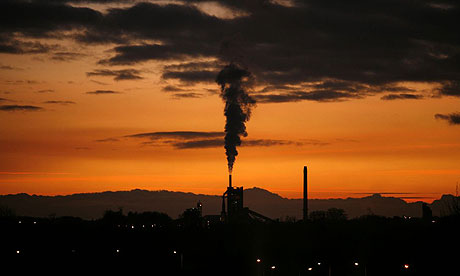Alok Jha, green technology correspondent
guardian.co.uk, Wednesday 31 December 2008 14.59 GMTCement, a vast source of planet-warming carbon dioxide, could be transformed into a means of stripping the greenhouse gas from the atmosphere, thanks to an innovation from British engineers.
The new environmentally formulation means the cement industry could change from being a "significant emitter to a significant absorber of CO2," says Nikolaos Vlasopoulos, chief scientist at London-based Novacem, whose invention has garnered support and funding from industry and environmentalists.
The new cement, which uses a different raw material, certainly has a vast potential market. Making the 2bn tonnes of cement used globally every year pumps out 5% of the world's CO2 emissions - more than the entire aviation industry. And the long-term trends are upwards: a recent report by the French bank Credit Agricole estimated that, by 2020, demand for cement will increase by 50% compared to today.
Making traditional cement results in greenhouse gas emissions from two sources: it requires intense heat, and so a lot of energy to heat up the ovens that cook the raw material, such as limestone. That then releases further CO2 as it burns. But, until now, noone has found a large-scale way to tackle this fundamental problem.
Novacem's cement, based on magnesium silicates, not only requires much less heating, it also absorbs large amounts of CO2 as it hardens, making it carbon negative. Set up by Vlasopoulos and his colleagues at Imperial College London, Novacem has already attracted the attention of major construction companies such as Rio Tinto Minerals, WSP Group and Laing O'Rourke, and investors including the Carbon Trust.
Revealed: The cement that eats carbon dioxide
Technorati Tags: carbon sequestration
Thursday, January 1, 2009
Revealed: The cement that eats carbon dioxide
Labels:
carbon sequestration
Subscribe to:
Post Comments (Atom)




No comments:
Post a Comment